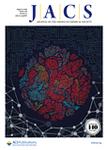版权所有:内蒙古大学图书馆 技术提供:维普资讯• 智图
内蒙古自治区呼和浩特市赛罕区大学西街235号 邮编: 010021

作者机构:Department of Chemistry and Biochemistry University of California Santa Barbara Santa Barbara California 93106 United StatesState Key Laboratory of Physical Chemistry of Solid Surfaces Collaborative Innovation Center of Chemistry for Energy Materials (iChEM) College of Chemistry and Chemical Engineering Xiamen University Xiamen 361005 P. R. China Hefei National Laboratory for Physical Sciences at the Microscale Collaborative Innovation Center of Chemistry for Energy Materials (iChEM) CAS Center for Excellence in Nanoscience School of Chemistry and Materials Science University of Science and Technology of China Hefei 230026 P. R. China Center for Nanophase Materials Science Oak Ridge National Laboratory Oak Ridge Tennessee 37830 United States BASF SE Ludwigshafen am Rhein 67063 Germany Materials Department University of California Santa Barbara Santa Barbara California United States Department of Mechanical Engineering University of California Santa Barbara Santa Barbara California 93106 United States School of Resources and Materials Northeastern University at Qinhuangdao Qinhuangdao 066004 P. R. China Department of Chemistry and Biochemistry University of California Santa Barbara Santa Barbara California 93106 United States Department of Chemistry and Biochemistry University of California Santa Barbara Santa Barbara California 93106 United States California Research Alliance (CARA) BASF Corporation Berkeley California 94720-1460 United States State Key Laboratory of Physical Chemistry of Solid Surfaces Collaborative Innovation Center of Chemistry for Energy Materials (iChEM) College of Chemistry and Chemical Engineering Xiamen University Xiamen 361005 P. R. China Center for Nanophase Materials Science Oak Ridge National Laboratory Oak Ridge Tennessee 37830 United States State Key Laboratory of Physical Chemistry of Solid Surfaces Collaborative Innovation Center of Chemistry for Energy Materials (iChEM) College of Chemistry and Chemical Engineering Xiamen University Xiamen 361005 P. R. China Department of Chemistry and Biochemistry University of California Santa Barbara Santa Barbara California 93106 United States Hefei National Laboratory for Physical Sciences at the Microscale Collaborative Innovation Center of Chemistry for Energy Materials (iChEM) CAS Center for Excellence in Nanoscience School of Chemistry and Materials Science University of Science and Technology of China Hefei 230026 P. R. China Department of Chemistry and Biochemistry University of California Santa Barbara Santa Barbara California 93106 United StatesMaterials Department University of California Santa Barbara Santa Barbara California United States
出 版 物:《JOURNAL OF THE AMERICAN CHEMICAL SOCIETY》 (美国化学会志)
年 卷 期:2019年第141卷第44期
页 面:17950-17950页
核心收录:
基 金:Materials Sciences ORNL Center National Science Foundation, NSF, (21522508) National Science Foundation, NSF U.S. Department of Energy, USDOE Office of Science, SC Basic Energy Sciences, BES BASF Corporation, (040532) BASF Corporation Materials Research Science and Engineering Center, Harvard University, MRSEC National Natural Science Foundation of China, NSFC, (21633006) National Natural Science Foundation of China, NSFC China Scholarship Council, CSC, (201706310206) China Scholarship Council, CSC National Basic Research Program of China (973 Program), (2018YFA0208603) National Basic Research Program of China (973 Program)
主 题:Monolayers
摘 要:The chemical reactivity and/or the diffusion of Ag atoms or ions during thermal processing can cause irreversible structural damage, hindering the application of Ag nanowires (NWs) in transparent conducting films and other applications that make use of the material’s nanoscale properties. Here, we describe a simple and effective method for growing monolayer SnO2 on the surface of Ag nanowires under ambient conditions, which protects the Ag nanowires from chemical and structural damage. Our results show that Sn2+ and Ag atoms undergo a redox reaction in the presence of water. First-principle simulations suggest a reasonable mechanism for SnO2 formation, showing that the interfacial polarization of the silver by the SnO2 can significantly reduce the affinity of Ag to O2, thereby greatly reducing the oxidation of the silver. The corresponding values (for example, before coating: 17.2 Ω/sq at 86.4%, after coating: 19.0 Ω/sq at 86.6%) show that the deposition of monolayer SnO2 enables the preservation of high transparency and conductivity of Ag. In sharp contrast to the large-scale degradation of pure Ag-NW films including the significant reduction of its electrical conductivity when subjected to a series of harsh corrosion environments, monolayer SnO2 coated Ag-NW films survive structurally and retain their electrical conductivity. Consequently, the thermal, electrical, and chemical stability properties we report here, and the simplicity of the technology used to achieve them, are among the very best reported for transparent conductor materials to date.